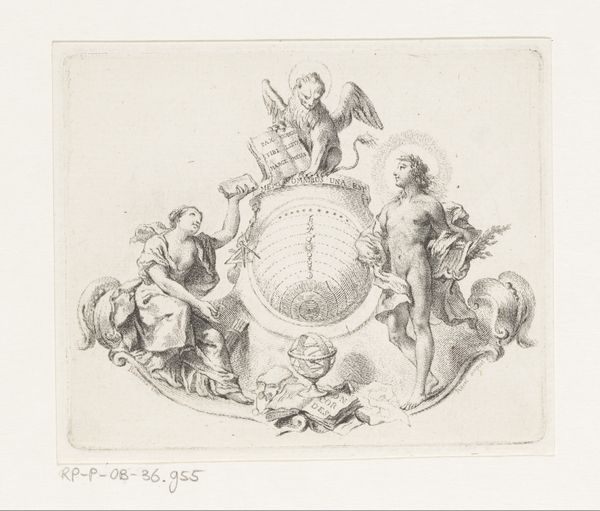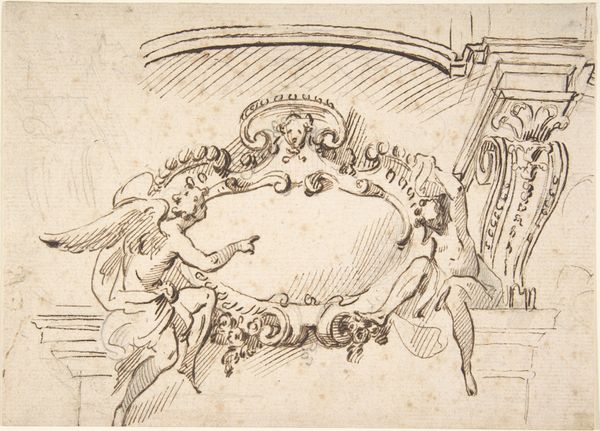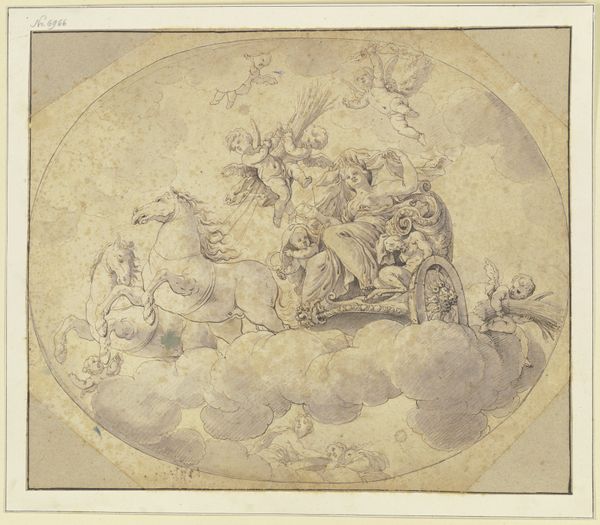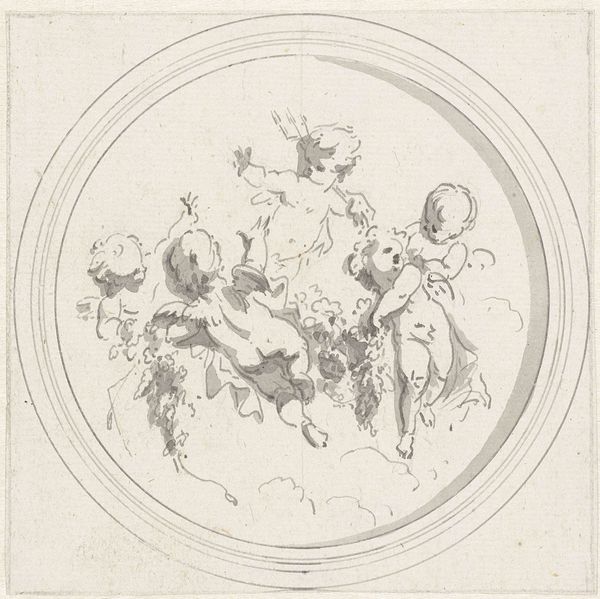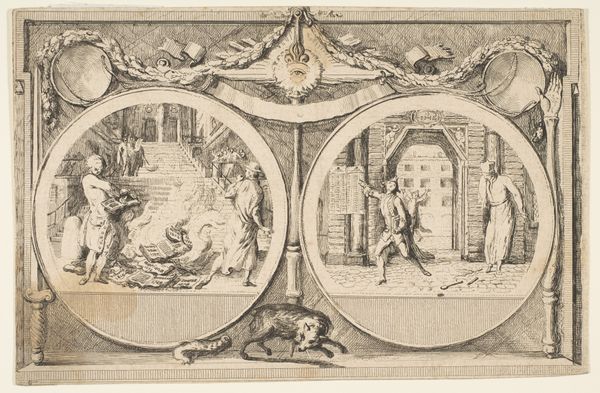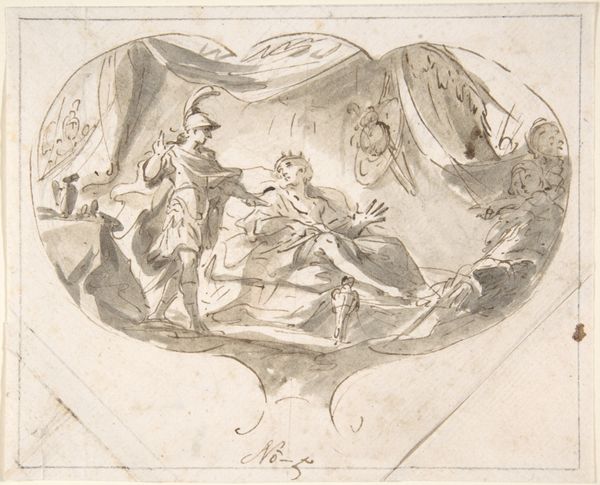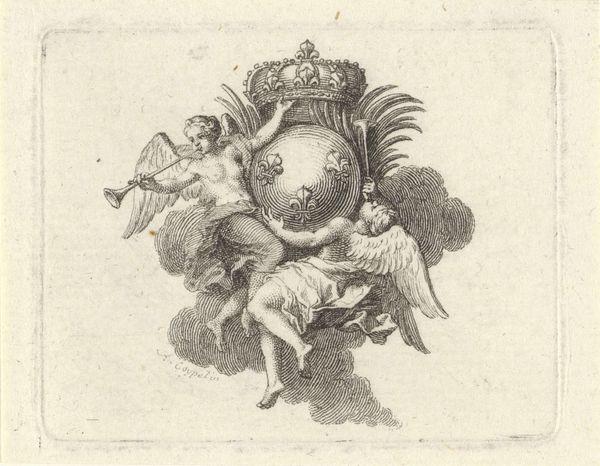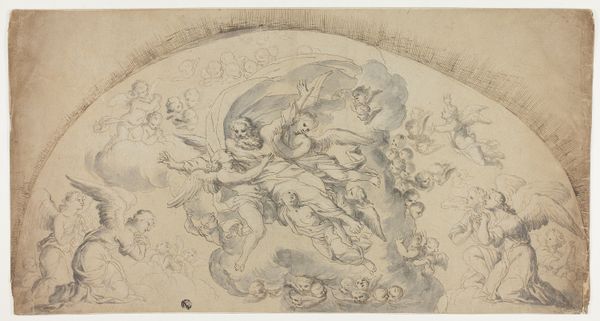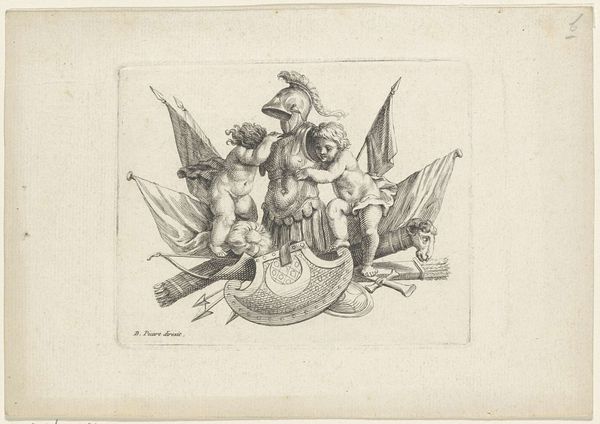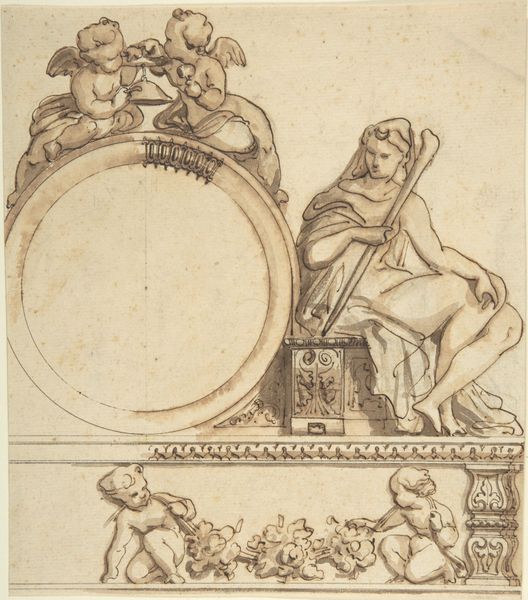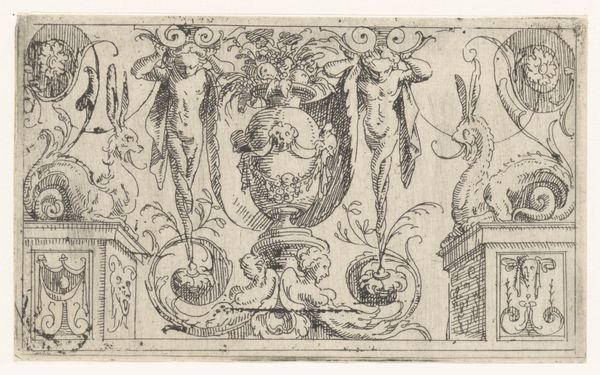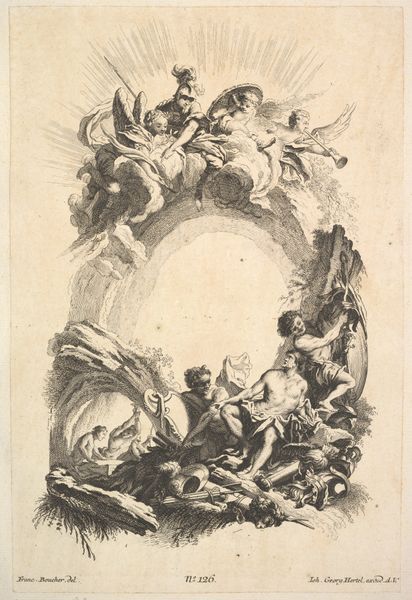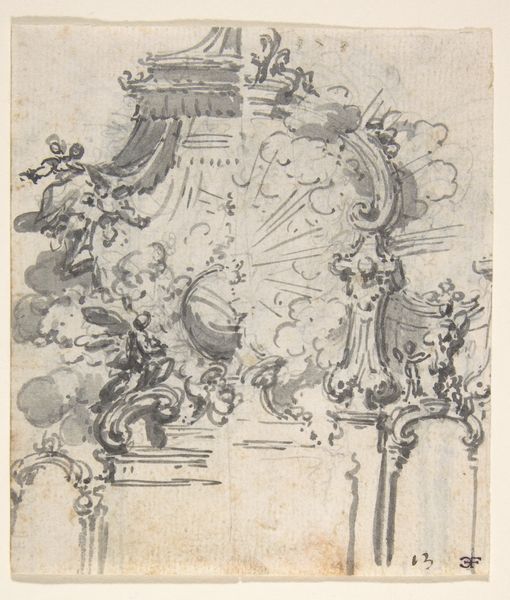
Dimensions: 7 x 8-5/8 in. (17.8 x 21.9 cm)
Copyright: Public Domain
Carlo Bianconi designed this cartouche with pen and brown ink in the 18th century. Here, symbols of antiquity are reborn: winged putti, reminiscent of Eros and Psyche, flank an empty shield crowned with garlands, while a grotesque mask grimaces from below. The putto, a symbol of divine love and innocence, has roots stretching back to ancient Greece and Rome, where winged figures were common in decorative arts and religious iconography. Yet, Bianconi's cherubs are not mere copies; they are infused with a new sensibility, reflecting the changing attitudes towards childhood and emotion in the Enlightenment. Consider how this motif has evolved. In the Renaissance, putti often symbolized spiritual love, whereas, in the Baroque period, they became more sensual and playful. The grotesque mask, a relic from ancient theatrical traditions, serves as a reminder of mortality, a memento mori, grounding the ethereal cherubs in earthly concerns. These contrasting motifs evoke a spectrum of human experience—love, joy, fear, and mortality. A cyclical progression that resurfaces, evolves, and takes on new meanings in different contexts.
Comments
No comments
Be the first to comment and join the conversation on the ultimate creative platform.
